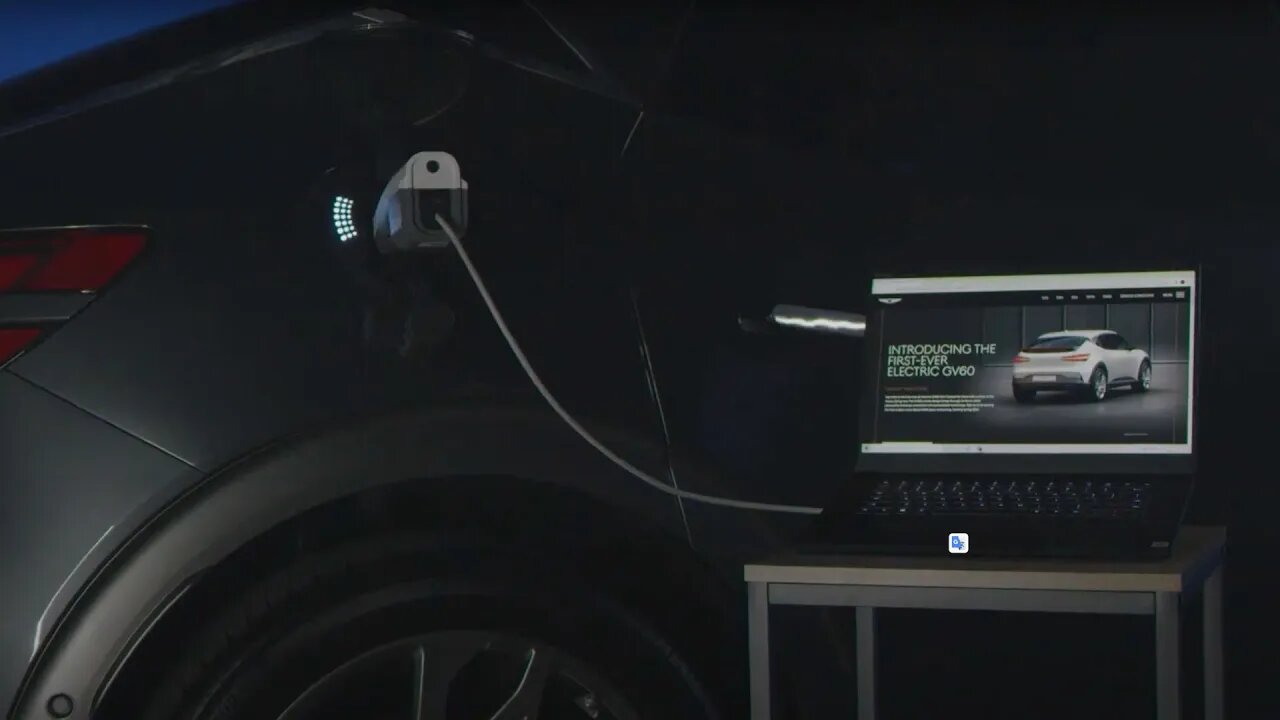Premium Only Content

Genesis GV60 - Vehicle to Load (V2L)
What Is Vehicle-To-Load (V2L)?
Vehicle-to-load (V2L) is a feature that enables an electric vehicle to provide regular AC power to appliances or loads such as lights, laptops or a refrigerator. This is a new technology where an EV contains an integrated inverter to provide AC power via one or more 240V outlets; it should not be confused with Vehicle-to-grid (V2G) technology which requires an advanced bidirectional charger. V2L power outlets can be used for backup power, much like a backup generator, to run multiple appliances depending on the output power rating (W) of the electric vehicle. Interestingly, EVs with V2L can even be used to charge other EVs which have run flat and become stranded.
V2L is useful for providing power while travelling or basic backup power at home. However, as explained below, the same technology can enable off-grid solar systems to reduce their dependence on backup diesel and petrol generators significantly. Additionally, V2L vehicles can be integrated into a hybrid (grid-tie) solar system to provide energy storage and emergency backup power.
V2L Power Ratings
V2L power output is measured in either Amps (A) or Kilowatts (kW) and generally ranges from 10A to 15A (2.4kW to 3.6kW). Most EV manufacturers list the total kW power rating available via one or more AC outlets. For reference, a standard household 240V power output is rated at 10A, equating to 2.4kW (10A x 240V), so any appliance used in a regular household outlet should work on an EV with V2L. Some EVs, such as the Hyundai Ioniq 5 and Kia EV6 have a 3.6kW power rating which is equivalent to a 15A outlet, so they could operate multiple large appliances. The Ford F-150 lightning has the highest V2L rating of 9.6kW via 4 AC power outlets. It is also important to emphasise that the output power rating is the maximum or peak rating. However, it may be problematic to use loads rated at the maximum for more than a few minutes. In the same way modern backup generators should not be run at the limit, it’s recommended not to use loads rated above 90% of the power rating, especially if the loads are being used for an extended period of time, especially in warm or hot weather.
-
 7:31
7:31
A collection of the best cars in the world
2 years ago2023 Toyota 4Runner Overview
489 -
 25:33
25:33
marcushouse
1 day ago $17.65 earnedStarship Exploded! What Went Wrong? Flight Test 7 Explained
80.1K39 -
 1:00:50
1:00:50
Squaring The Circle, A Randall Carlson Podcast
21 hours ago#035 Cosmic Catastrophe In The Age Of Leo - Squaring The Circle: A Randall Carlson Podcast
50.9K23 -
 1:33:14
1:33:14
Jamie Kennedy
1 day agoThe LA Fires...
37.2K7 -
 2:01:45
2:01:45
Quite Frankly
1 day ago"Inauguration Eve: Trump Time Travel Review" 1/17/25
39.4K33 -
 58:42
58:42
SGT Report
4 months agoYour REAL NEWS vs. CIA Mockingbird LIES -- Sam Anthony
167K95 -
 2:59
2:59
LimitlessAmbition
1 day ago $7.22 earnedPROVE THEM WRONG With This POWERFUL Motivation!
73K2 -
 8:31:37
8:31:37
G2G Gaming Channel
14 hours agoGive me my Helmet, Im going in!! #RumbleGaming
88.9K2 -
 4:45:11
4:45:11
MoFio23!
13 hours agoNintendo Switch It UP Saturdays with The Fellas: LIVE - Episode #3
56.4K7 -
 6:23:10
6:23:10
SquallRush
11 hours agoMarvel Rivals Collab
44K